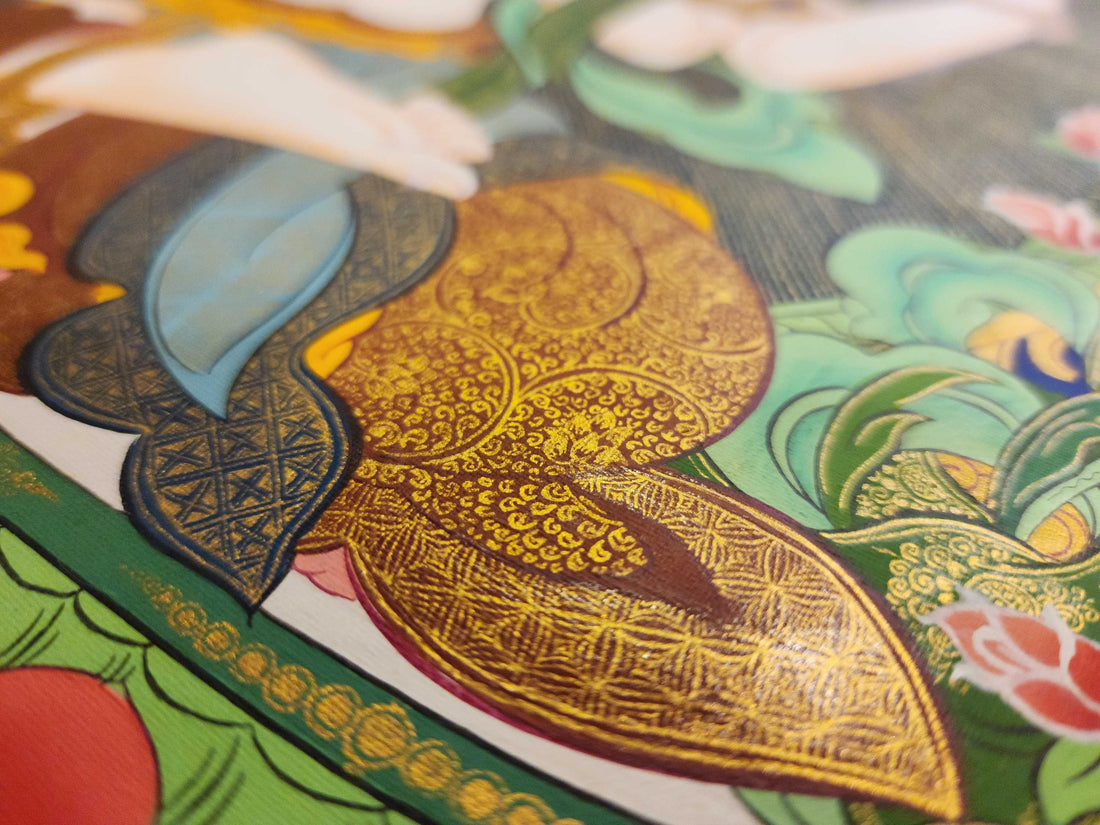
History of Thangka Painting Through the Centuries
Share
Introduction
Thangka painting has evolved over more than a thousand years, blending art, spirituality, and cultural heritage. Its history reflects the spread of Buddhism across the Himalayan region and the preservation of sacred traditions.
Origins in India (7th–8th Century)
— Inspired by Indian Buddhist art from Nalanda and Ajanta caves.
— Early Thangkas were portable scroll paintings used by monks traveling to Tibet.
Flourishing in Tibet (11th–14th Century)
— Tibetan artisans refined iconographic accuracy and spiritual symbolism.
— Introduction of mineral pigments, gold, and silk brocade borders elevated artistry.
Nepalese Influence (14th–17th Century)
— Newar artists from Nepal brought intricate details and vibrant colors.
— Fusion of Hindu and Buddhist iconography influenced stylistic development.
Expansion to Bhutan & Mongolia (17th–19th Century)
— Bhutan adopted bold, colorful, and devotional styles.
— Mongolia embraced Thangkas as teaching tools during monastic expansion.
Modern Revival (20th Century–Present)
— Despite historical challenges, Thangka art thrives through traditional ateliers in Nepal, Tibet, and Bhutan.
Global collectors and spiritual practitioners continue to preserve and celebrate its heritage.
Conclusion
From ancient India to modern studios, Thangka painting has carried spiritual teachings across centuries. Its history is a journey of devotion, artistry, and cultural exchange.
